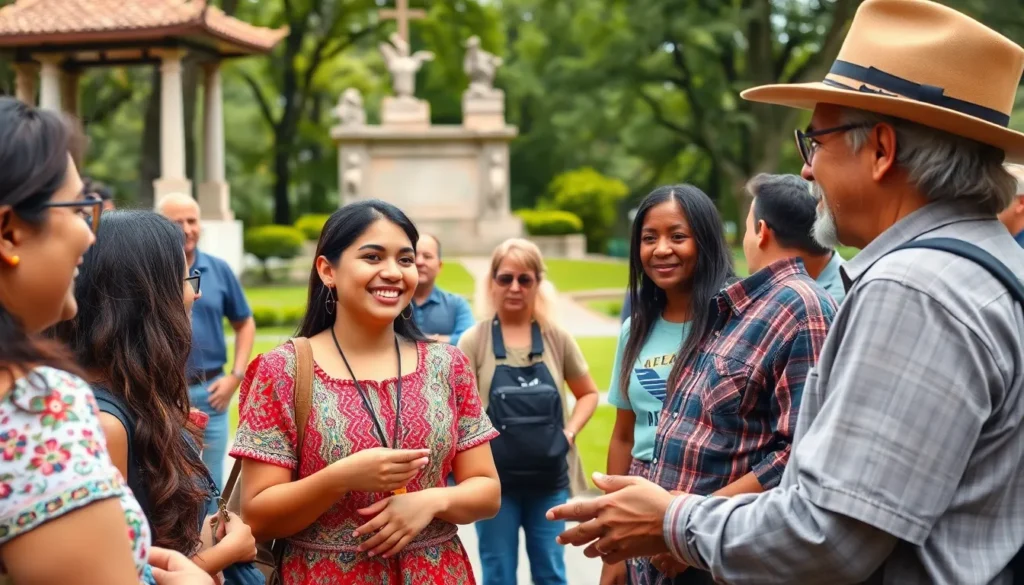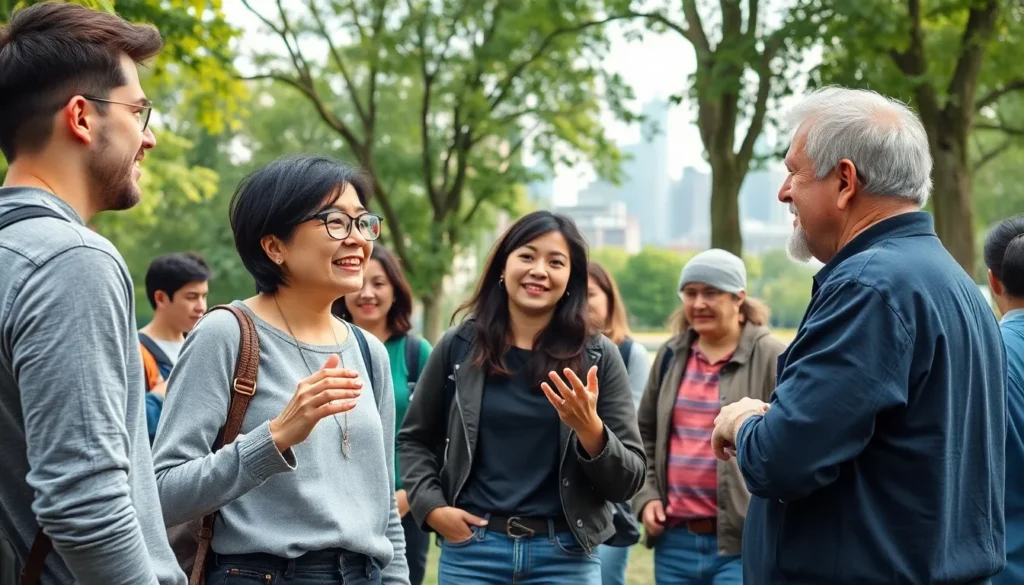Heritage isn’t just a fancy word for old stuff collecting dust in a museum. It’s the vibrant tapestry of traditions, languages, and stories that shape who we are. Think of it as the ultimate family recipe, blending the spices of history with a dash of culture. Without it, life would be like a birthday cake without frosting—just plain and a little sad.
Understanding heritage is like discovering a treasure chest filled with gems from the past. Each piece tells a story, connecting generations and giving context to the present. So, whether it’s the quirky customs of your ancestors or the unique dialects that pepper your hometown, embracing heritage enriches our lives in ways we often overlook. Let’s dive into what makes heritage not just meaningful, but downright essential for living a full and colorful life.
Meaning of Heritage
Heritage encompasses the collective identities shaped by history, culture, and traditions passed through generations. This concept holds deep significance, influencing not just personal identities but also community bonds.
Definition of Heritage
Heritage refers to the legacy of cultural, historical, and natural attributes inherited from previous generations. It includes tangible elements, such as buildings and artifacts, alongside intangible aspects like traditions, languages, and social practices. Heritage provides important context for understanding who individuals are and how communities develop. Recognizing its impact can foster a greater appreciation for diverse backgrounds and shared histories.
Types of Heritage
Various forms of heritage exist, each contributing uniquely to cultural identity. Tangible heritage includes monuments, artwork, and archaeological sites essential to preserving historical narratives. Intangible heritage comprises oral traditions, performance arts, and rituals that play vital roles in communities’ social fabric. Natural heritage involves landscapes, ecosystems, and biodiversity significant to the cultural identity of specific groups. Each type enriches the understanding of heritage’s role in shaping present and future identities.
Cultural Significance of Heritage

Heritage deeply influences cultural identities and societal connections.
Heritage and Identity
Cultural identity often intertwines with shared heritage. Traditions, language, and customs reflect the essence of communities. Each individual’s background shapes personal narratives. This connection to heritage fosters pride and belonging. For example, indigenous practices help communities connect with their ancestors. They link past and present, maintaining a sense of continuity. Furthermore, recognizing diverse heritages enhances mutual respect and understanding among different groups.
Heritage in Contemporary Society
Contemporary society benefits significantly from heritage preservation. Many communities strive to maintain traditions while adapting to modern influences. Renewal of historical sites and promotion of local customs enrich urban environments. Heritage plays a crucial role in tourism, drawing visitors interested in authenticity. Such cultural exchanges promote global awareness and appreciation. Schools increasingly focus on teaching heritage, integrating it into curricula. This approach nurtures future generations’ respect for cultural diversity. Overall, the relevance of heritage in modern life remains evident, enhancing social cohesion and cultural vitality.
The Role of Heritage in Preservation
Heritage preservation plays a crucial role in maintaining cultural identity and historical continuity. The methods employed vary widely, each serving a specific purpose in safeguarding heritage for future generations.
Methods of Heritage Preservation
Methods of heritage preservation include documentation, restoration, and maintenance. Documentation captures cultural artifacts through digital archiving and photography, allowing for easy access and study. Restoration aims to return a heritage site or object to its original condition, often using traditional materials and techniques. Maintenance involves regular inspections and repairs to prevent deterioration, ensuring that structures remain intact over time. Community involvement often enhances these efforts, as local populations contribute knowledge, labor, and resources.
Challenges in Heritage Conservation
Challenges in heritage conservation frequently arise due to funding limitations, climate change, and urban development. Financial constraints can hinder projects, making it difficult to carry out necessary restorations. Climate change poses threats, as rising temperatures and severe weather events can accelerate degradation. Urban development may place pressure on heritage sites, often prioritizing economic growth over preservation. Moreover, public awareness and interest fluctuate, making ongoing support for conservation endeavors essential. Enhanced collaboration among stakeholders can mitigate these challenges, encouraging a unified approach to heritage preservation.
Impact of Heritage on Communities
Heritage significantly shapes communities, offering both economic benefits and fostering social cohesion.
Economic Benefits of Heritage
Heritage sites attract millions of tourists each year, generating substantial income for local economies. For instance, UNESCO World Heritage Sites see a notable increase in visitor numbers, which directly benefits businesses in hospitality and retail. Jobs often emerge in tourism-related sectors, providing employment opportunities for community members. Additionally, heritage conservation initiatives can lead to urban revitalization, enhancing property values and promoting investment in local infrastructure. These economic advantages show how heritage not only preserves history but also supports economic growth and development.
Heritage and Social Cohesion
Heritage unifies individuals by fostering a sense of belonging and shared identity within communities. Traditions and shared cultural practices create essential social bonds, enhancing interpersonal relationships. Celebrating festivals and historical events allows community members to participate in collective experiences, strengthening ties. Interestingly, heritage education in schools promotes understanding and respect for diverse cultures, encouraging inclusive environments. Moreover, communities that engage in heritage preservation efforts often exhibit higher levels of social capital, resulting in increased collaboration and mutual support. Emphasizing heritage helps communities flourish as cohesive units, enriching social fabric and cultural vitality.
Conclusion
Heritage serves as a vital link between the past and the present. It enriches lives by providing a sense of identity and belonging. By embracing and preserving heritage, communities can foster pride and unity while celebrating their unique stories.
The ongoing efforts to safeguard cultural and natural heritage are essential for future generations. As society evolves, maintaining these connections will ensure that the richness of diverse traditions continues to thrive. Recognizing the value of heritage paves the way for a more inclusive and vibrant world where everyone can appreciate the tapestry of human experience.



